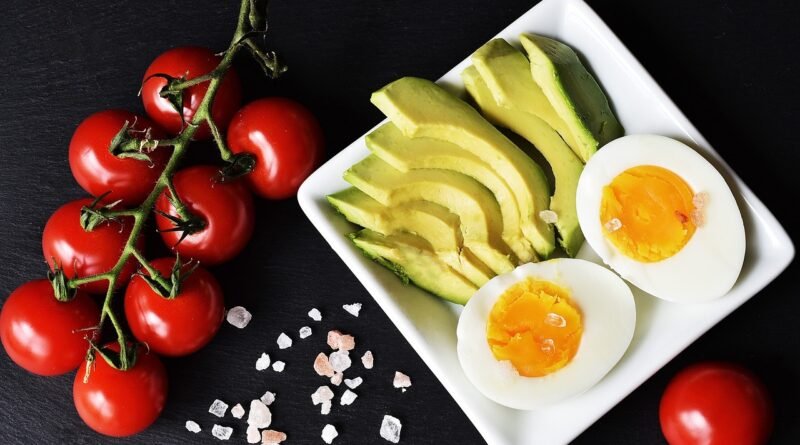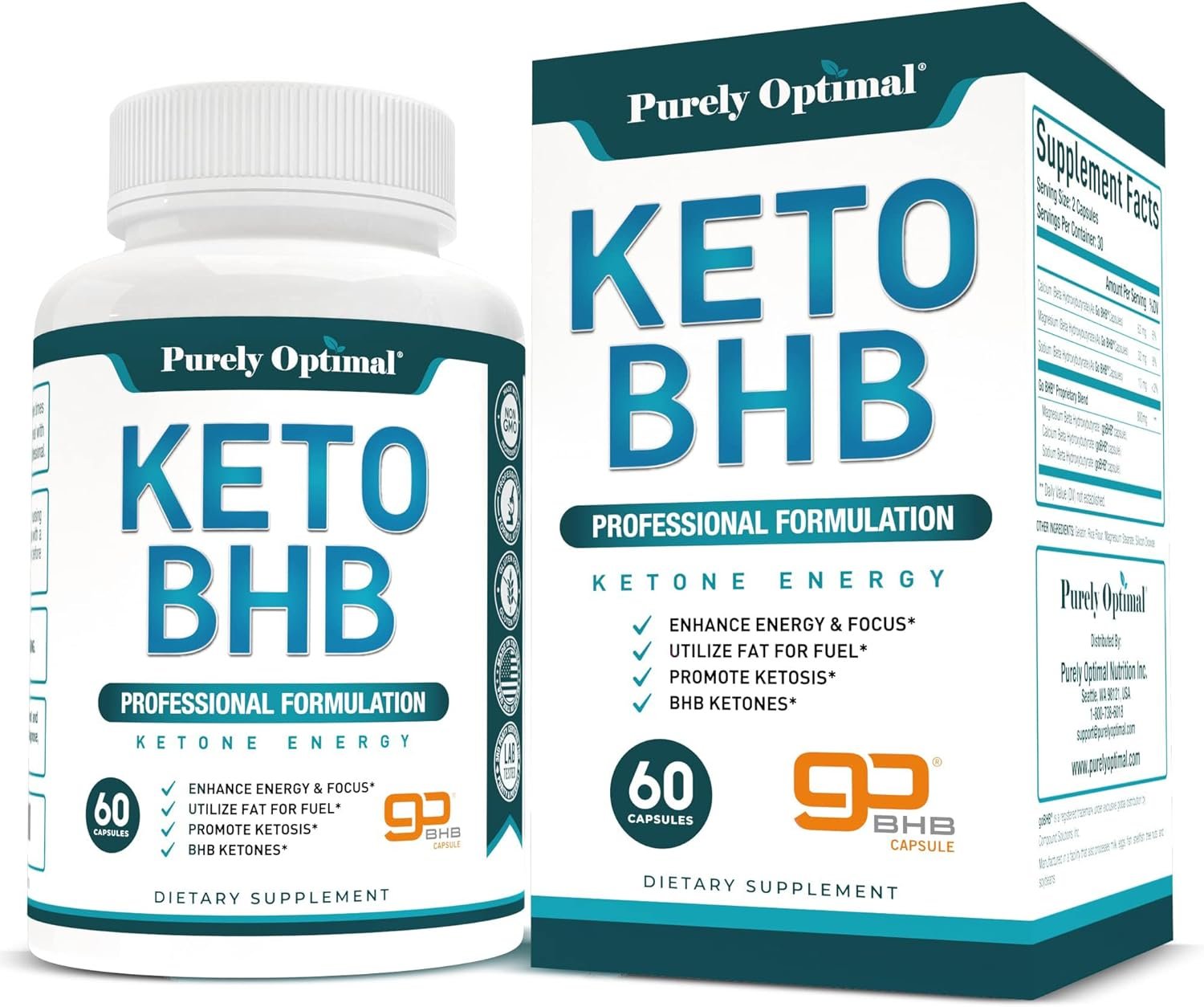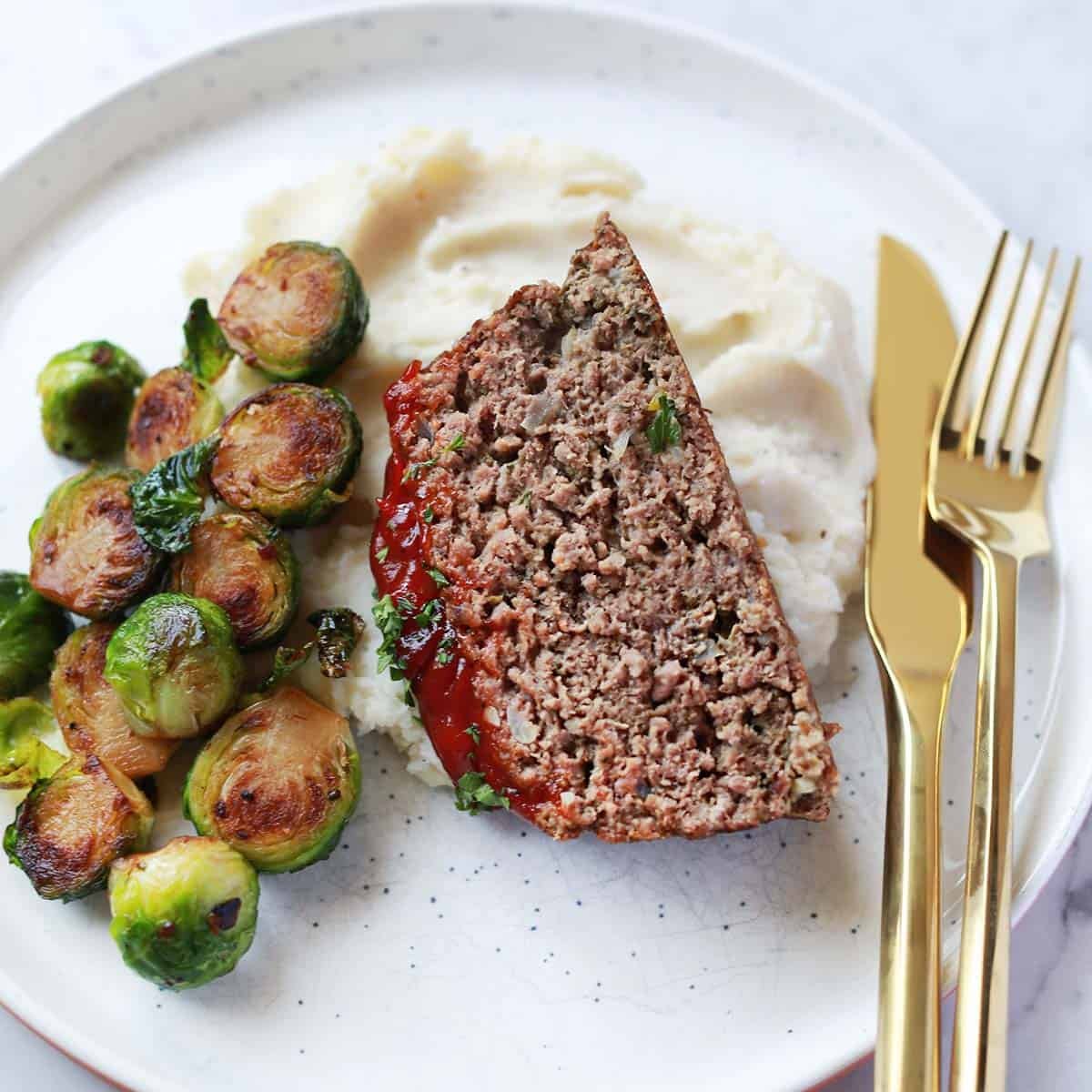Everything You Can and Cannot Eat on a Keto Diet: A Comprehensive List of Foods
The ketogenic diet is a high-fat, moderate-protein and very low-carbohydrate diet. Carbohydrates are the body’s preferred source of energy, but on a strict ketogenic diet, about 5% to 10% of energy intake is from carbohydrates. The reduction of carbohydrates puts the body into a metabolic state called ketosis. Ketosis is when the body starts breaking down stored fat into molecules called ketone bodies to use for energy without circulating blood sugar from food. Once the body reaches ketosis, most cells will use ketone bodies to generate energy until you start eating carbohydrates again.
Traditionally, the ketogenic diet was only used in clinical settings to reduce seizures in children with epilepsy. “Now there is a lot of interest in the diet’s effectiveness in helping with other neurological conditions, cancer, diabetes, PCOS (polycystic ovary syndrome), obesity, high cholesterol and cardiovascular disease,” says Emily Stone, M.S., RD, founder of Eat to Enjoy. People also eat keto to lose weight.
Even if you know that keto is a very low-carb, high-fat, moderate-protein diet, it can be confusing to know which foods to eat. Here’s our guide to foods you can eat, foods you should limit and foods you can have in moderation when you’re following a ketogenic diet.
Foods You Can Eat on the Ketogenic Diet
Here is a list of all the low-carb foods that are appropriate to eat when you’re following keto.
- Fish and seafood
- Low-carb veggies
- Cheese
- Avocados
- Poultry
- Eggs
- Nuts, seeds and healthful oils
- Plain Greek yogurt and cottage cheese
- Berries
- Unsweetened coffee and tea
- Dark chocolate and cocoa powder
Fish and Seafood
Fish is rich in B vitamins, potassium and selenium; it’s also protein-rich and carb-free. Salmon, sardines, mackerel, albacore tuna and other fatty fish boast high levels of omega-3 fats, which have been found to improve hemoglobin A1c levels-a test that measures your blood sugar levels over a span of 3 months-according to a 2022 review published in Prostaglandins, Leukotrienes and Essential Fatty Acids. Another review, published in Advances in Nutrition in 2020, found that frequent fish intake has been linked to a decreased risk of chronic disease as well as improved mental health. Aim to consume at least two 3-ounce servings of fatty fish weekly.
Low-Carb Veggies
Nonstarchy vegetables are low in calories and carbs but high in many nutrients, including vitamin C and several minerals. They also contain antioxidants that help protect against cell-damaging free radicals. Aim for nonstarchy vegetables with less than 8 grams of net carbs per cup. Net carbs are total carbohydrates minus fiber. Broccoli, cauliflower, green beans, bell peppers, zucchini and spinach fit the bill.
Cheese has zero carbohydrates and is high in fat, making it an excellent fit for the ketogenic diet. It’s also rich in protein and calcium. Make note that a 1-ounce slice of Cheddar cheese has about 5 g of saturated fat, which the American Heart Association recommends limiting to lower your risk of heart disease.
Read more: 5 Reasons Cheese Is Good for Your Health
Plain Greek Yogurt and Cottage Cheese
Yogurt and cottage cheese are high in protein and calcium-rich. Seven ounces of plain Greek yogurt provides about 8 g of carbohydrates and 20 g of protein. Eight ounces of cottage cheese has just over 6 g of carbohydrates with 28 g of protein. A 2019 study published in showed that both calcium and protein can reduce appetite and promote fullness. Choosing higher-fat yogurts and cottage cheese can help keep you full for longer, and full-fat products would be part of the ketogenic diet.
Choose heart-healthy fats like avocados, which are high in monounsaturated fat and potassium, a mineral many Americans are lacking. Half of a medium avocado contains about 6 g of total carbohydrates, 4.5 g of which are fiber, and 360 milligrams of potassium, which is about 8% of your daily needs. Swapping animal fats for plant fats like avocados can help improve cholesterol and triglyceride levels, according to a 2018 study published in The American Journal of Clinical Nutrition.
Meat and Poultry
Meat is a source of lean protein and is considered a staple on the ketogenic diet. Fresh meat and poultry contain no carbohydrates and are rich in B vitamins and several minerals, including potassium, selenium and zinc. While processed meats, like bacon and sausage, are allowed on keto, they aren’t the best for your heart and may raise your risk of certain types of cancer, according to a 2021 review published in the European Journal of Epidemiology. Choose chicken, fish and beef more often and limit processed meats.
Eggs are high in protein, B vitamins, minerals and antioxidants. Two large eggs contain zero carbohydrates and over 12 g of protein. Eggs promote feelings of fullness, according to a 2020 International Journal of Environmental Research and Public Health study. They also contain antioxidants such as lutein and zeaxanthin, which help protect eye health, according to a 2020 study published in Clinical Nutrition.
Nuts, Seeds and Healthy Oils
Nuts and seeds are full of healthy polyunsaturated and monounsaturated fats, fiber and protein. They also are very low in net carbs. Olive oil and coconut oil are the two oils recommended on the keto diet. Olive oil is high in oleic acid and is associated with a lower risk of heart disease. Coconut oil is high in saturated fat but contains medium-chain triglycerides (MCTs), which can increase ketone production. MCTs may increase metabolic rate and promote the loss of weight and belly fat too. Be sure to measure portion sizes when consuming any healthy fat.
Carb counts for 1 oz. (28 g) of nuts and seeds (net carbohydrate equals total carbs minus fiber):
Berries are rich in antioxidants that reduce inflammation and protect against disease. They are low in carbs and high in fiber.
Carb counts for 1/2 cup of some berries:
Unsweetened Coffee and Tea
Plain coffee and tea contain zero g of carbohydrates, fat or protein, so they are A-OK on the keto diet. Plus, a 2022 study published in the European Journal of Preventative Cardiology shows drinking 2–3 cups of coffee per day lowers the risk of cardiovascular disease. Tea is rich in antioxidants, has less caffeine than coffee and has many health-promoting properties that may protect against cancer, prevent high blood pressure and blood sugar and promote cognitive function.
Dark Chocolate and Cocoa Powder
Check the label on these, as the amount of carbs depends on the type and how much you consume. Cocoa has been called a “superfruit” because it is rich in antioxidants, and dark chocolate contains flavanols, which may reduce the risk of heart disease by lowering blood pressure and keeping arteries healthy, according to a 2018 review published in the Journal of the American College of Nutrition.
Foods to Limit on the Keto Diet
With the keto diet being low in carbohydrates, some of the foods with higher carbs that you may need to limit include:
- Grains
- Starchy vegetables and high-sugar fruits
- Sweetened yogurt
- Juices
- Honey, syrup or sugar in any form
- Chips and crackers
- Baked goods including gluten-free baked goods
Don’t get too discouraged. Dietitians Stone and Laura Dority, RDN, LDN, with the Keto Hope Foundation, say that no foods are off-limits on the keto diet. It’s about total carbohydrate intake and how you choose to “spend” your carbs. Generally, you should stay under 20 to 40 g of carbohydrates per day. “The exact amount needed to achieve ketosis can vary on the individual, though, with carb prescriptions ranging from 10 to 60 g per day. This total is for net carbohydrates (total carbs minus fiber),” says Stone.
Dority adds, “Individuals who are active can eat more carbs (maybe more at the 40-g level) than someone who is sedentary.”
High-Carb Foods That Most People Limit on the Keto Diet
Cereal, crackers, rice, pasta, bread and beer are high in carbohydrates. Even whole-wheat pasta and bean-based pasta are high in carbs. Consider alternatives like spiralized vegetables or shirataki noodles, which are lower-carb options. Sugary breakfast cereals and healthy whole-grain cereals are high in carbohydrates too and should be limited. “A slice of bread has 11 g of carbs on average so technically you could have one slice a day, but that’s spending all your carbs,” says Dority. “For the same carbs, you could have A LOT of veggies.”
Beer can be enjoyed in moderation on a low-carb diet. Dry wine and spirits are better options, but all alcohol should be minimal.
Starchy Vegetables and High-Sugar Fruits
Starchy vegetables contain more digestible carbohydrates than fiber and should be limited when you’re on the ketogenic diet. These include corn, potatoes, sweet potatoes and beets. Limit high-sugar fruits too, which spike your blood sugar more quickly than berries and have more carbohydrates.
Carb counts for high-sugar fruits:
Carb counts for starchy vegetables:
- Corn (1 cup): 32 g net carbs (36 g total carbs)
- Potato (1 medium): 33 g net carbs (37 g total carbs)
- Sweet potato (1 medium): 20 g net carbs (24 g total carbs)
- Beets (1 cup, cooked): 14 g net carbs (17 g total carbs)
Sweetened Yogurts
Stick to plain yogurt to limit added sugars (aka carbohydrates). Greek yogurt is higher in protein and lower in carbohydrates compared to regular yogurt.
Fruit Drinks and Juices
Fruit drinks-even the 100% fruit juice kind-are high in fast-digesting carbs that spike your blood sugar. Stick to water.
Honey, Syrup and Sugar in Any Form
Limit sugar, honey, maple syrup and other forms of sugar, which are high in carbohydrates and low in nutrients.
Chips and Crackers
Keep chips, crackers and other processed, grain-based snack foods minimal, which are high in carbohydrates and low in fiber.
Gluten-Free Baked Goods
Gluten-free does not equal carb-free. Many gluten-free breads and muffins are as high in carbohydrates as traditional baked goods. They are also typically lower in fiber.
Foods and Drinks You Can Sometimes Have on the Keto Diet
You can technically have any food on the keto diet if it falls within your daily carbohydrate goal, but these foods fall in the middle between high-carb and low-carb.
Pictured Recipe: Homemade Almond Milk
Milk is an excellent source of calcium and vitamin D and contains potassium and several B vitamins. But 1 cup has 12 g of sugar (lactose). Choose almond, coconut or another low-carb milk instead.
Beans and Legumes
Beans and legumes are high in fiber and protein and are part of a heart-healthy diet but are also high in carbohydrates. They may be included in small amounts on a ketogenic diet. However, they may take up large amounts of your daily carb intake.
Pros of the Ketogenic Diet
“There is solid evidence to support the use of the ketogenic diet in individuals with epilepsy who have seizures that are drug-resistant,” says Dority. In the short term, people who follow the diet report weight loss. Dority says, “There is some recent research showing promise in disorders such as autism, traumatic brain injury, brain tumors, migraines and Alzheimer’s, as well as some research on ketogenic diets and Type 2 diabetes, including reducing insulin needs, fasting blood sugar levels, lowering A1C and obtaining significant weight loss.” But much more research needs to be done to substantiate these claims, and any benefits would only impact those who are successfully able to follow the restrictive diet.
Cons of the Ketogenic Diet
“Like most highly restrictive diets, it is difficult to meet nutritional needs while doing keto,” says Stone. “It often comes with uncomfortable side effects like constipation and the ‘keto flu.’ Also, the long-term health consequences are not well understood.” Highly restrictive diets are notoriously hard to follow and can impact your relationship with food in a negative way. Other negative side effects of the keto diet include bad breath, hair loss and damaged gut health.
The Bottom Line
Keto is not a one-size-fits-all prescription, and working with a dietitian is crucial to ensure you’re getting essential nutrients while maintaining ketosis. There’s some research on the potential benefits of the ketogenic diet for many conditions, but it is very challenging for most people to keep it up for the long haul. Plus, the long-term effects on overall health are poorly understood and need more research. Not to mention, we at EatingWell don’t believe in being so restrictive and avoiding nutritious foods like whole grains, legumes, fruits and vegetables. If you decide to go keto, work with a registered dietitian nutritionist (RDN) to help you create a plan.





